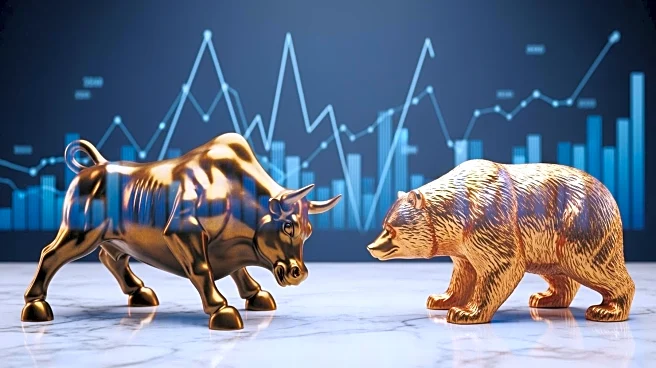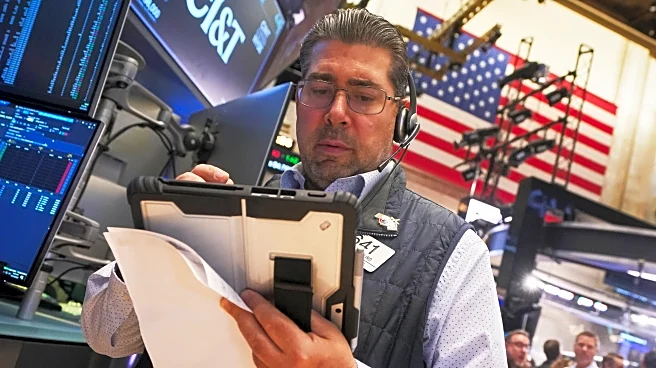What's Happening?
The stock market is experiencing a period of volatility, with aggressive bears being challenged by a rebound in high-beta stocks and positive earnings reports. The S&P 500 has returned to the top of its two-week range, driven by dip-buying and upbeat
earnings. Despite a recent purge of speculative stocks, the market remains buoyant, supported by benign Treasury yields and seasonal factors. Traders are focusing on high-momentum stocks, with the SPHB ETF outperforming the S&P 500. The market is navigating a push-pull dynamic, balancing earnings reactions with elevated valuations.
Why It's Important?
This market behavior highlights the resilience of the U.S. stock market amid economic uncertainties. The ability of high-beta stocks to rebound suggests investor confidence in growth sectors, potentially influencing investment strategies. The interplay between earnings reports and market reactions underscores the importance of corporate performance in shaping market trends. As traders anticipate Big Tech earnings and a Federal Reserve meeting, the market's response could impact investor sentiment and economic forecasts. Stakeholders, including investors and policymakers, must consider these dynamics when making decisions.
What's Next?
The upcoming Big Tech earnings and Federal Reserve meeting are key events that could influence market direction. Traders will be closely monitoring these developments for signals on economic policy and corporate performance. The delayed September CPI report may also affect market sentiment, particularly if it challenges current expectations of rate cuts. As the market navigates these events, stakeholders will need to assess the implications for investment strategies and economic outlooks. The potential for continued volatility suggests a need for cautious optimism and strategic planning.
Beyond the Headlines
The current market dynamics raise questions about the sustainability of high valuations and the role of speculative trading. The reliance on dip-buying and momentum stocks may lead to increased risk exposure, prompting discussions on market regulation and investor protection. Additionally, the seasonal factors influencing market behavior highlight the complex interplay between economic cycles and market trends. Long-term, these developments could shape the evolution of market strategies and regulatory frameworks.














